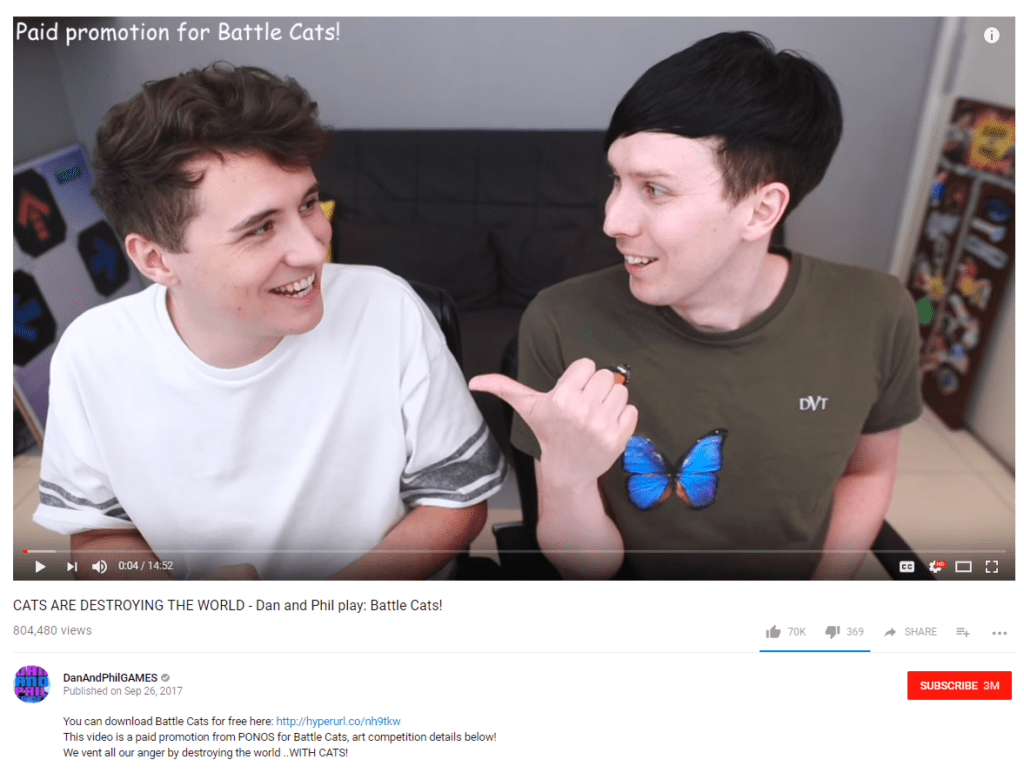The recently publicized violations of the U.S. Federal Trade Commission Endorsement Guides have prompted influencers and brands alike to be more conscientious when it comes to properly disclose paid partnerships. While the action taken against the violators was unfortunate for those involved, let it serve as a reminder to be committed to proper disclosure practices to avoid possible legal action against perceived or actual misconduct.
With Influencer Marketing being at the very core of GameInfluencer, we are diligent when it comes to remaining abreast of the Endorsement Guides and as such adhere to the following three principles: Be Transparent, Utilize the Available Tools and Recognize Platform Differences.
Be Transparent
First and foremost, transparency is crucial. These days, the average consumer is more discerning and critical of advertisements. Therefore, followers appreciate when influencers and brands are forthcoming regarding their partnerships. As Casey Neistat, a world-famous YouTube content creator put it, “The audience appreciates upfrontness and honesty. Their appetite for bullshit is short and no one likes feeling duped.”
Despite the required tagging, the partnership is not devalued. In fact, doing so helps strengthen the partnership. Advertisers who properly disclose see higher rates of positive engagement, especially when the advertiser is aligned with an influencer who genuinely supports and engages with the product.
Utilize the Available Tools
The days of witty or abbreviated hashtags like #collab, #sp or #spon are behind us. As the FTC explains, “if there is a material connection between an endorser and an advertiser, that connection must or should be clearly and conspicuously disclosed.”
Thankfully, all major social media platforms like Facebook, Instagram, and YouTube, are making clear and conspicuous disclosure a bit easier through the development of branded content tagging tools. Instagram, for example, has developed the Branded Content feature which allows influencers to tag advertisers on posts or stories where advertisers can then approve the tag and subsequently track success post by post.
Ultimately, the burden of disclosure falls on the shoulders of the influencer and advertiser, so it’s in everyone’s best interest to be on the same page when it comes to using these tools. With that being said, don’t solely rely exclusively on these tools. Per the FTC, when used by themselves they’re not sufficient for proper disclosure. Consider using other means to communicate your partnership like using the caption for more detailed disclosure.
Recognize Platform Differences
No matter the partnership, whether it be an ambassadorship, celebrity endorsement or outright paid influencer post, the requirement is the same – disclosure must take place. Although the means through which this is done is different per channel and content type. The FTC recognizes these nuances and as such addresses each one individually.
In regard to video content, the FTC recommends including a clear verbal recognition of the partnership at the start of the video; best practice being within the first 30 seconds as well as including a written description beneath the video. Gaming influencers, Dan and Phil, who partnered with GameInfluencer for a recent “The Battle Cats” campaign, did this seamlessly within their video and description.

Disclosing on Twitter, where you’re limited to a specific character count, is a bit trickier as involved parties still need enough characters to effectively communicate their message. In spite of these limitations, we recommend getting straight to the point. Avoid ambiguous or abbreviated hashtags (#sp, #thanks, #collab) and use explicit ones like #ad or #sponsored.
Here at GameInfluencer, we take the FTC’s Endorsement Guides very seriously as we’re committed to building the most creative and law-abiding campaigns. We believe that by applying these principles to each campaign, the partnership is even stronger and more secure.
While we wholeheartedly recommend being transparent, utilizing the tools at your fingertips and learning about the disclosure differences per platform, we also advocate frequent visits to the Federal Trade Commission site to research and remain knowledgeable of the Endorsement Guides. After all, the Federal Trade Commission is the true expert and has a vast amount of resources readily available.


